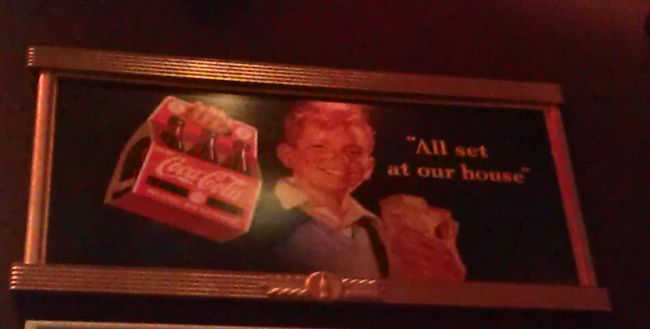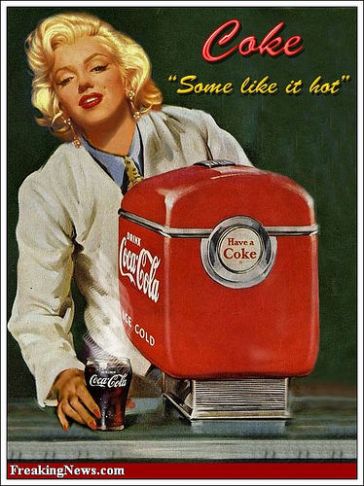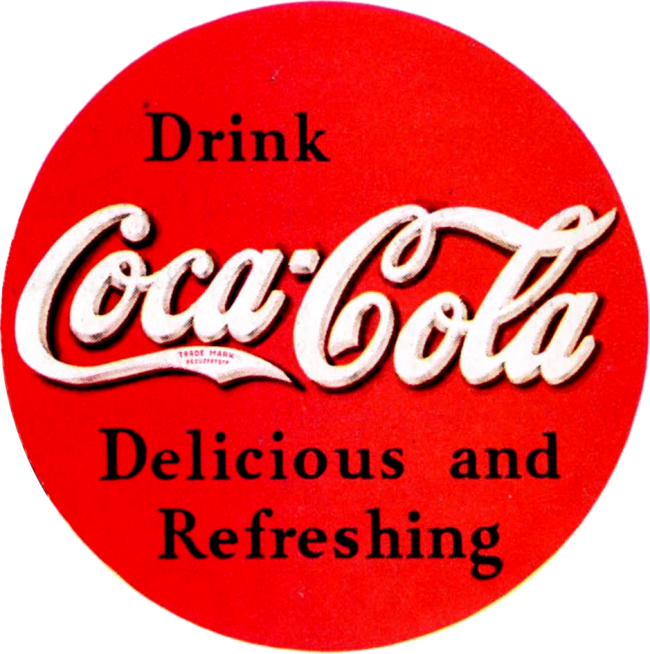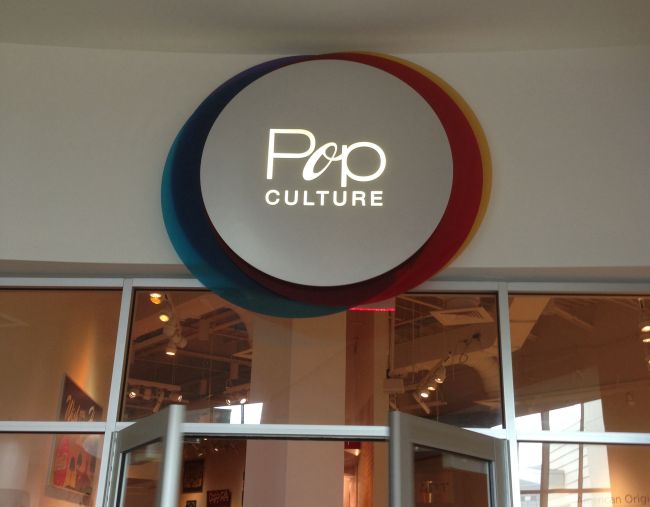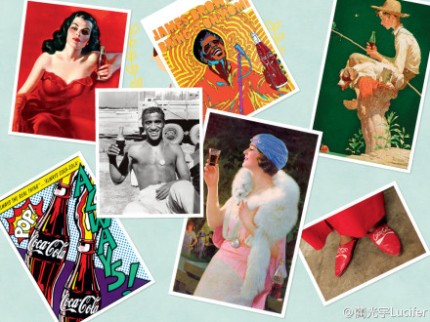Tags
Advertising Strategies of Coca-Cola
Group Member:G-Lin, Peter, Michael
After the trip in Coca-Cola and exploration on the internet for more information about the company, we get a clear mind on the strategies that Coca takes. We will give an analysis about the advertisements we took during the trip and those downloaded on the internet.
The first ad is a video on the internet.
(Coke Chase 2013 Ad)http://www.youtube.com/watch?v=6uFQAqwbwSg
It’s an amusing video on the internet which uses pathos to stimulate audience’s sense and makes audience just want to have a Coke. Here, we can find pathos in several places in the video. At the beginning, we saw a man with several camels in the hot dessert, which created a sweltering environment making people feel thirsty. Then, the scene switched to a huge Coke towering in the middle of dessert. It seemed to be heavenly, and the man swallowed saliva forcing the audience produce a resonance of thirst and desire for the Coke, which is a typical strategy of pathos using in ads. More and more people like cowboys, bikers, beautiful girls driving bus came into the screen. They were fighting for the huge Coke on their way. Finally, they found it was a sign telling them still 50 miles to go. However, they began to sprint without hesitation. This scene makes people who were attracted by the ads impulsive, just like there was only one Coke left in the world.
Also, there are some other elements in this video. This ad is on TV and internet, cool cowboys and those pretty girls can lure heterosexual audiences. And at the end of video, there was a guess about the final winner among those roles, which left a suspense leading audience to pay close attention on the result. That’s how Coca-Cola attracts increasing number of fans with pathos.
Secondly, we will have an introduction about two related images.
Coca-Cola also use ethos to convince customers of its quality. Actually, ethos can affect people in different ways. Let us have a look on this picture which was taken during the field trip.
It says ”All set at our house”. When you see the slogan, people feel comfortable and trusted, because it reminds you of your childhood when your mother made drinks for you at home. This strategy takes advantage of cognitive resonance which reminds audience the things they used to trust. Another strategy may relate to those celebrities. See the picture downloaded from the internet.
http://dope.sg/blog/2012/08/06/25-hottest-women-in-coca-cola-ads/
Marilyn Monroe was the famous actress in the 20th century. She is the symbol of beauty making people admire her and love her. If Coca-Cola invited Monroe to endorse for the ads, it would add credibility of Coke’s quality among audience. The intended audience is the fans of Marilyn Monroe. People who love her might love Coca-Cola.
According these two different ways to increase creditability, the former strategy may attract more fans. Because people maybe not familiar with those famous person, they always have same experience in their life.
Let’s turn to the third ad.
http://www.adquan.com/article1.php?cid=&id=1740
Technically, it is not an advertisement, it’s a piece of news in China’s largest Sports Channel CCTV5, the intended audience is all the sports fans.
Look at the two smiling athletes in the TV screen. They are Liu Xiang(110m hurdle world champion) and Yao Ming(famous NBA player). Each of them hold a bottle of COCA-COLA! The audience might think, “Wow! They are great athletes and they love Coke! It might be helpful to my body if I follow them! It must be cool to have Coke!”
It can serve an even greater effect than a classic advertisement. This kind of “advertisement” is so-called implanted advertisement. It can be more powerful than a regular advertisement cause you don’t even know you’re watching one. Your minds will naturally follow the idea of having Coke means health and happiness. You won’t feel resistant and just accept it.
Also, this kind of implanted advertisement uses ethos in psychology. First, the ones who drink Coke are famous, you can easily trust them. That creates credibility. Secondly, you might think they are just casually drinking Coke not intentionally, that’s quite worth trust.
Then, a question follows. Is this just a coincidence or is this arranged by CCTV5 and Coca-Cola? Who knows? As far as we know, it has done a great job in advertising.
Next is about using logos in ad. See the picture below.
http://logos.wikia.com/wiki/File:Coca-Cola_ad_logo_1934.png
The picture collected online was the advertisement of Coca-Cola for a period of time. It’s a typical example of the using of logos in psychology.
The advertisement is quite simple, it may be a huge billboard on the street or a logo on a auto machine. It is quite simple. Only 4 words and a logo are included, but they contain all the useful information for you. Coca-Cola is kind of drink and it makes you feel refreshing.
I think this advertisement is used in the early period of Coke cause the information it gives is something we all know now. But at the early stage when people can’t quite accept this kind of drink, it is very useful to use logos to give these information and attracts people to have a taste.
So, the use of logos is to inform people of unknown information, and the one in the picture is quite neat and simple, that’s even better. Now, you can rarely see a Coca-Cola’s advertisement including information about what it is because who doesn’t know Coca-Cola?
Last, we’ll show you some other interesting and useful strategies.
This photo was taken at the entrance of the pop culture gallery. It aims to show us the pop culture of the Coca-Cola. The slogan was a pun on the name of Coca-Cola. It includes two meanings: ” pop” as in popular and “pop” as another word for soda. Coca-Cola has a long history of popular since 1886. The gallery exhibits many popular ads of Coca-Cola, “early depictions of 1920s-era flappers, toasting life with ice-cold Coca-Cola, were used on calendars and serving tray, 1924”, “a sultry ‘Lady in Red’ advertisement from Brazil”, “The entertainer Sammy Davis Jr. on the set of ‘Porgy and Bess’ 1959”, “Coca-Cola printed a poster of the R&B great James Brown, 1970.” “A Pop Art Coca-Cola bottle advertisement from Sydney, 1998”, which is described by the second photo.
http://tmagazine.blogs.nytimes.com/2011/05/09/pop-culture/
The ads of the Coca-Cola always follow the contemporary trends, which attracts the public’s attention. Therefore, we can call the culture of the Coca-Cola is a history of popular.
Ultimately, Coca has the common strategies with other companies using pathos, ethos and logos as we introduced above to attract more and more people in all ages around world. Also, it has its own ways to entice audience to buy Cokes, like implanted advertisement and pun. However, people are now falling into Coca-Cola’s culture unconsciously. All we see is the company wants us to see. Passion, happiness, desire, amusement, and credit are all positive elements making us ignore the negative elements which exists at hundred percent. Is Coke good for players? Should people with diabetes drink Coke? Do we still need enough water every day? We cannot find answers in Coke’s ads and there is no instruction in drinking Coke. Audience should think by themselves and explore the essence of those strategies. So, how many Cokes will you drink every day after reading this passage?

